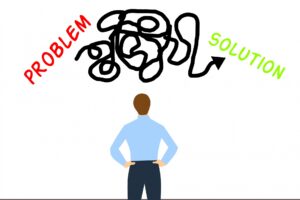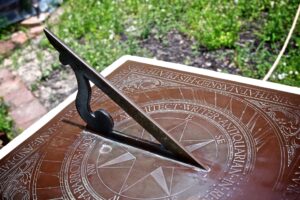
In my recounting of my first trip to Japan in 1989, I remarked that when we arrived in Tokyo and settled in at our “businessman’s hotel” (J. seifuso), breaking out our sitting cushions (J. zafu), and sitting in zazen, it became clear to me that I had not gone anywhere. Ten thousand miles and four thousand dollars later, we were — or at least I was — in the same place. And, indeed, that there is only one place. Some historical references may be appropriate here, to get a grip on the historical scope of Matsuoka Roshi’s mission to the US, in the context of the times as well as those leading up to his lifetime, and our following in his gentle footsteps.
This month we celebrate Founder’s Month, recognizing that our founding teacher from Japan, who asked to be called, simply, Sensei, was born, and died, in the month of November, the former in 1912, the latter in 1997, some 20 years after the founding of ASZC.
During a week of recovery, after returning from Japan this time, I saw in the New York Times that this month we also celebrate the 100th anniversary of Albert Einstein’s “General Theory of Relativity,” which means he published this great work in or about 1915, when Matsuoka Roshi was three years old. About a quarter century later, in 1939, O-Sensei came to this country, on a mission to bring genuine Zen practice to our shores. We may be mixing too many metaphors for you, but this also reminds me of the address given by Abraham Lincoln at Gettysburg, also in November, the 19th, 1863, to be specific, roughly 150 years ago, but only about 50 years before Einstein’s theory was published, and some 75 years before Sensei’s arrival on these shores:
Four score and seven years ago our fathers brought forth on this continent a new nation, conceived in liberty, and dedicated to the proposition that all men are created equal.
The connection between these events, and the teachings they hold, may not be at all clear, but I will attempt to illustrate their relevance, to myself, at least. Traveling in Japan, one is impressed with the difference in “all men,” from the kind of attention that being un-Japanese brings your way. You tend to stand out in the crowd, and so your obvious difference, from the Japanese, is unavoidable. And yet, when you make eye contact, the sameness comes smiling through.
Matsuoka Roshi was well-known as a cheerleader for America, and a staunch promoter of Japan, in the years when it was difficult to take this position — just before, during, and after WWII. Lincoln’s words, following the above opening, had become relevant once again, only on an international level:
Now we are engaged in a great civil war, testing whether that nation, or any nation so conceived and so dedicated, can long endure.
At the time of Sensei’s coming to America, it was beginning to be questionable whether the emerging international system could long endure. And it could make you pretty unwelcome, to be an outspoken bridge-builder between the parties to the conflict at that time, with horrific atrocities on both sides, still stinging today.
But a bridge-builder is what Sensei was, as reflected in two different chapters in his collected talks, both entitled “Zen Can Bridge East and West.” And our going to Japan was a tangible expression of that truth, closing the circuit some 75 years after he first crossed the Pacific, bringing Zen from West of the USA to Japan’s (relative) East. This is a good example of the conventional relativity of our concept of space, and why we say that Bodhidharma did not come from the West. And it returns us to the issue of time, in all its relativity, on which I commented earlier in this series.
Noting that as a result of my first trip to Japan, space did not seem to change on a personal level, at least in a way that I could detect, from the view from the cushion, begs the question of time; did time change in Japan, or on the way there or back?
If we pay deference to Einstein’s conflation of space and time into spacetime, much like Master Dogen’s marriage of practice-enlightenment, we would have to agree that in some wise, it had to. The mere acceleration of one’s location in space during the flight would demand that some miniscule difference had to obtain, but not so much that it could be discerned. Speeds approaching that of light are apparently required, according to his earlier Special Theory of Relativity, in order for noticeable distortions to become apparent.
The familiar jetlag and time-zone phenomena can be chalked up to custom. We notice any variation in what we have become accustomed to, and our bodies become conditioned to what we are consciously accustomed to. Our so-called circadian rhythm, for example, a recognized biological process not limited to human beings, can be disrupted. But it should be noted that this supposedly fixed parameter of consciousness is evidently skewed, even in familiar climes and times. It apparently reverts to a 25-hour cycle, rather than 24-, when we are isolated with no exposure to daylight, for a sufficient time. Buddha only knows what happens if we live at one of the poles, relatively out of reach of the daily rotation of the earth.
One effect predicted by Einstein’s insight, that I have struggled with, is the principle of equivalency of acceleration and gravity. Not that I should be expected to understand such an idea, with little or no training in physics, let alone math. But the recent article explained that if you are floating in an elevator, for example, at some point in space, far enough from massive bodies to be free-floating, or at a so-called lagrange point, where the gravitational attraction of two massive bodies cancels out, you would not feel your own weight. Recent video images of astronaut Scott Kelly somersaulting on the space station illustrate this condition in real time.
If the elevator were hooked to a drive of some sort, pulling it “upward” at an accelerating rate, then you would experience “gravity” as you came to rest against the bottom or floor of the chamber. Thus, a field of gravity, and the speed of acceleration, have the same effect, at least on the beings in their thrall.
What this tells me, my unsophisticated grasp of what is happening in reality notwithstanding, is that in all cases, and not only in the special case of being accelerated to near-light-speed, we are “floating” in a field of gravity that is itself a variable (in some locations on the planet, gravity is greater or less, depending on the shape of the globe, which is not a perfect sphere). And, because everything is in motion, relative to everything else, we are always experiencing some degree of acceleration that is not in our control, for example the rotation of the earth at the equator, about 1,040 mph, which is greater than that at any other point on the globe. And flying to Japan, and back to the US, against the rotation in the former case, and with it in the latter, one senses the distortion perceptually.
All such ruminations about relative time and space usually leave me with a queasy feeling, a kind of vertigo, as I realize that what seems firm and solid, the so-called “firmament” of Biblical reference, is not firm or solid at all, only relatively so. The efforts to place events in a historical time scale likewise are finally less than satisfactorily clarifying, though they do, at my age of three-quarters of a century, seem to shrink the gaps between — consisting of a century, a half-century, even a century-and-a-half — into an inconsequential span, one in which causal connections, or at least meaningful correlations, seem possible.
Then stumbling across the recent series on Nova, illustrating the development of the North American continent from the breakup of the ancient “Pangea,” obviates that contextual grasp, showing that the Rocky Mountains, for example, which we flew over on the last leg from Los Angeles to Atlanta, are only the latest iteration of that mountain range, version 1.0 of which consisted of sandstone peaks erected by the collision of the underwater Pacific tectonic plate, pushing under the plate that begins with the coastal edge of California. In even earlier times, the sandstone came from sediments at the bottom of an ocean that once covered the entire Western US. As Buddha would often say, “inconceivable.”
This kind of knowledge is different from speculation, however, though grasping it in any kind of coherent manner may require a considerable bit of imagination. But Einstein insisted that imagination is more important than knowledge, in intuiting what reality is really like; and Buddha himself, let alone Master Dogen, would not have dismissed scientific data as irrelevant to our understanding of Zen, however remotely germane to our immediate experience. One trait that science and Zen share in common is the importance of truths that are not subject to ordinary perception.
But I can’t help but be enthralled by the images triggered by such an experience as traveling to Japan and back in a span of three or four weeks, impossible in earlier times; and the forceful impact that it has on shaking my embrace of my own perceptual reality. I am reluctant to allow myself to readjust, and conform to what I have grown accustomed to, as my “normal” timeframe and sense of space tries to reassert its hegemony.
Fortunately, no worries, when we sit in zazen, the de-conditioning effect we have all experienced to some degree sets in with ever-more dispatch, and less wasting of time, so that I can be comfortable in my disorientation. Someone once said that in zazen, the barriers of time and space fall away, and I think this could not be more literally true. The old Zen sayings, paraphrasing, “Not a tile above my head; not a stone below my feet,” and “not even a toehold,” capture this sense of awe and wonder well.
I think we all experience relativity on a relative scale, and it does not take a mental giant to recognize it, though this of course takes nothing from Einstein’s great accomplishment. It is a bit strange to feel that the force of gravity holding us to the floor, to the cushion or the mattress, is equivalent to the Earth accelerating “upward.” I have a difficult time resolving how the actual movement of the planet, in rotating and orbiting at great velocities; not to mention the thrust of the Solar System relative to the center of the Milky Way; or for that matter the velocity of the galaxy itself, come into play. I can assume that there are proximate causes, as opposed to remote forces, and that the closer, the more effective, just as the magnet picking up the metal filings overcomes the greater force of gravity, at a distance. Just so, the really salient aspects of relativity must be intimate.
To me, recognizing relativity is as simple as watching the moon setting on the horizon at 4:00 in the morning at Eiheiji Monastery, knowing that someone in the US could have been watching the “same” moon, from a different time and space. From a third viewpoint, from interplanetary space, for example, the moment of the two moon-gazers would be seen to be the same.
Time and space are necessarily personal, and unified, in our consciousness, in that my time and space, my spacetime, is mine alone. Its center axis is occupied by my brain and spinal column, housing my nervous system. Yours is different, owing to the fact of your unique location in spacetime, or absolute dharma-location, being different from mine — however infinitesimally small the difference measured against geological time, or interstellar space.
I think that the worldview of Zen has historically recognized this seeming dichotomy, and that it is well-vetted in some of the classic Chinese teachings, as well as Master Dogen’s Shobogenzo Uji: Being-Time, for those of you who wish to explore the relationship of spacetime to consciousness further. Meanwhile, in zazen, the pertinent dimensions of our existence in dynamic spacetime are revealed, whether we know it or not. We do not need to travel to foreign lands to find this out, but it does tend to shake us out of our familiar comfort zone, to which we have become overly accustomed, to the detriment of our grasp of Zen.








